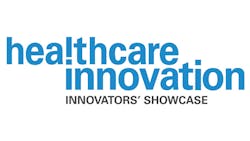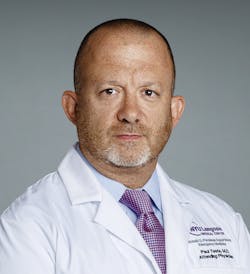As telehealth becomes a growing part of everyday healthcare delivery, interoperability and integration have emerged as critical success factors for organizations providing telehealth services. With that in mind, clinical and operational leaders at NYU Langone Health in New York City made the decision to leverage an open scheduling API and the existing MyChart personal health record capability inside its electronic health record (EHR, from Epic Systems Corporation), to create a fully integrated telehealth capability, rather than partnering with a third-party telemedicine vendor.
As a result, all telehealth encounters are integrated into the same core EHR, along with all in-person encounters. That strategy has also enabled NYU Langone clinicians to follow the standardized clinical workflow already present in the core EHR when participating in telehealth activity. And, following a successful pilot with NYU Langone employees in 2017, the health system publicly launched the NYU Langone Virtual Urgent Care service to adults and children (ages 5 and up) across a broad service area spanning New York, New Jersey, Connecticut, and Pennsylvania, with commercial insurance coverage accepted by Aetna, Cigna, Blue Cross Blue Shield, and UnitedHealthcare.
The entire patient experience is available on any smartphone or tablet using the NYU Langone Health app. Established patients log into the app with their MyChart account credentials, while new patients create an account on the fly without registrar intervention. During online check-in patients can electronically sign registration documents, verify existing allergies, medications and preferred pharmacy, make a co-payment, and enter a reason for visit which is all reconciled by the provider. Real-time text messaging guides the patient through their journey, and has reduced no-show rates to under 5 percent, from 15 percent, since its introduction. Meanwhile, providers receive push notifications to their smartphone when visits are scheduled and when the patient connects to the virtual room, allowing them to keep track of the schedule from anywhere. They access clinical encounter directly from the EHR and connect to the video visit, and subsequently complete clinical documentation during and after the encounter in a customized clinical navigator.
Over 8,500 patients have been seen via this program since it went fully live in September 2017, following an initial pilot earlier that year.
As with all of its telehealth initiatives to date, Testa notes that the management of this program involves a clinical lead, an operational lead, and a healthcare IT lead—in this case, that team has included a medical director for telehealth within emergency medicine, and an operational lead from the department of emergency medicine—a clinical administrator; as well as Sherwin, as associate director of virtual health.
Sherwin says that “I think that this product/project, truly highlights the importance of cross-organizational collaboration. This wouldn’t have been successful without an incredibly close partnership of a large group of IT teams, key operational partners, and the department of emergency medicine, plus our partners in marketing who make sure the message gets out to the patients, and our billing partners who have helped make all the arrangements with the plans.”
What has the experience been like for physicians and other clinicians? “I’m incredibly pleased with the feedback we’ve had from our clinicians,” Testa says. “This has allowed them a flexibility with their clinical practice beyond staffing physically in urgent care. Certain physicians want to do these visits from their own home, which they support. Some physicians need to be out of state for a period of time, and they can continue to do these visits.” What’s more, patient satisfaction has been extremely high, with a net promoter score standing at 77, and with scores provided by text message consistently above 4.5 on a scale of 5. “Our patients have given us tremendous raves,” Testa says, “as well as sharing ideas with us” that might further improve customer service.
“A tele-urgent care encounter, like a bricks-and-mortar encounter, is not appropriate for every condition,” Testa notes. “But addressing matters like a cough or urinary tract infection is something that this program is designed to handle; and in cases where a clinical referral is needed, it leads to a warm handoff into one of our EDs.” In the end, he says, “With the complexity of living in New York City, this is so helpful to our patients.”




